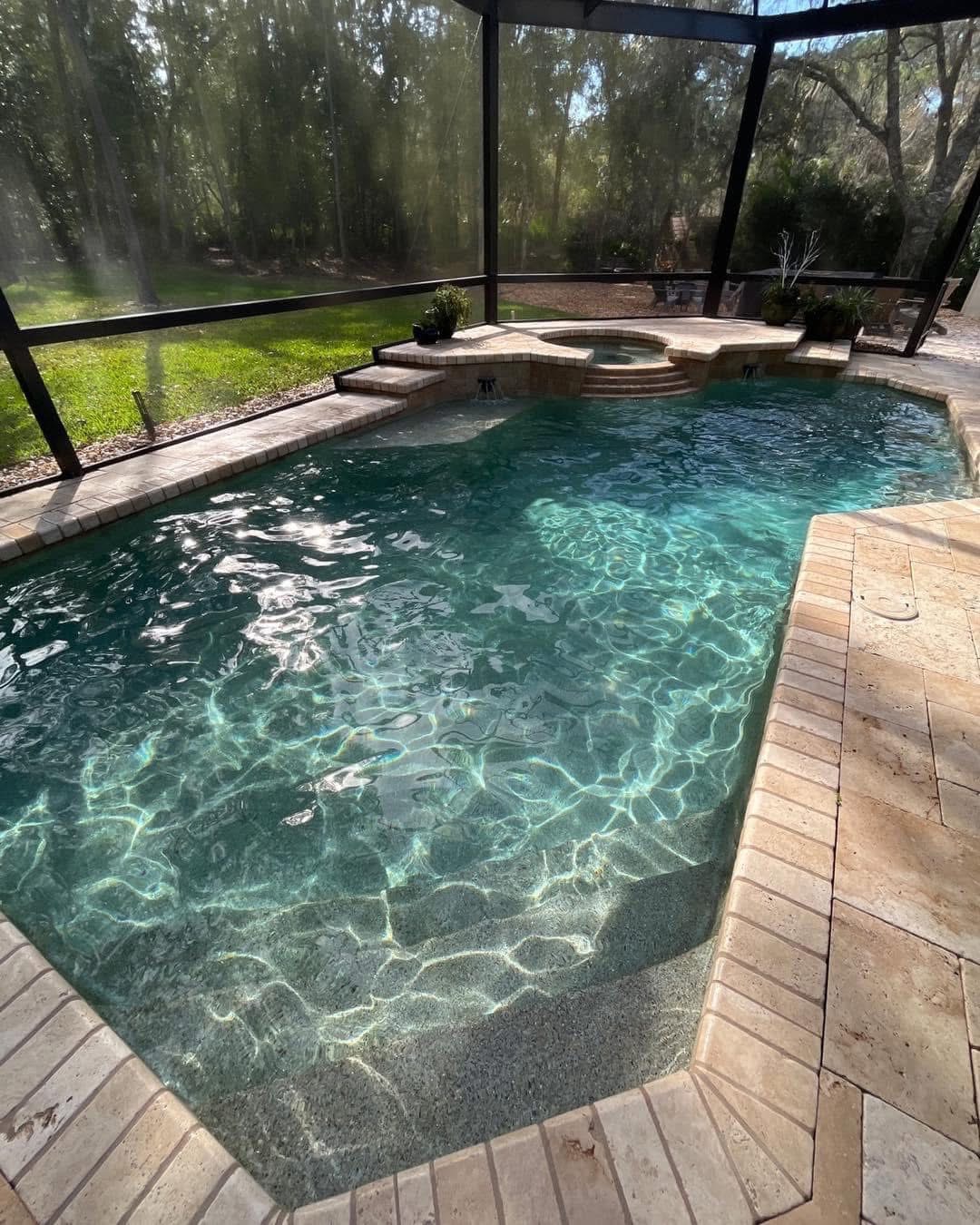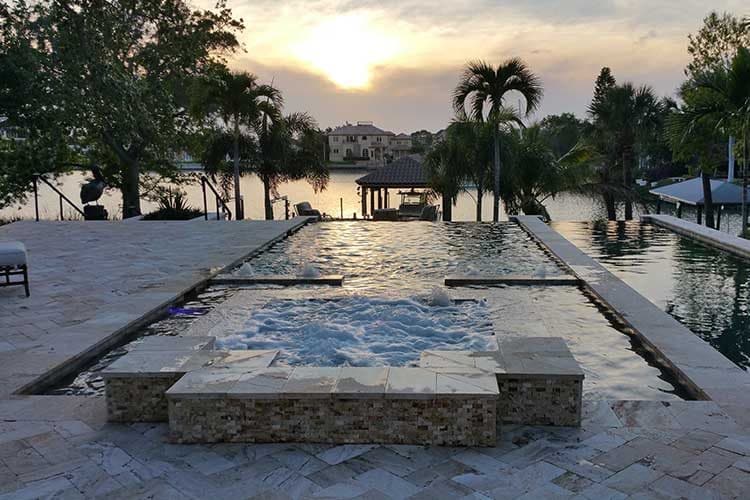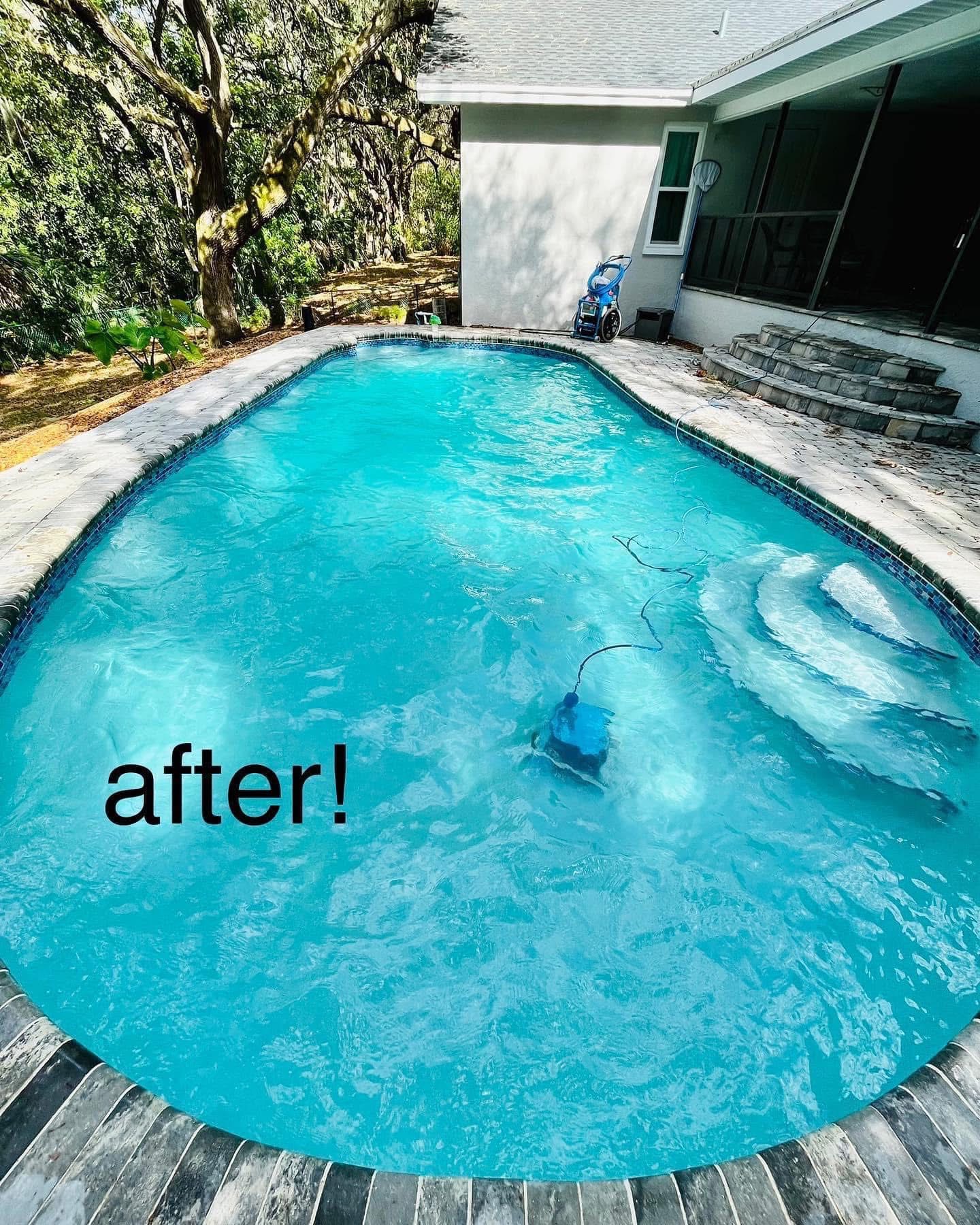Proper pool maintenance ensures clean water, protects equipment, and extends the life of your investment. In this guide, Mango Pools LLC Service & Repairs outlines everything pool owners need to know to keep their swimming pools clear and healthy all year long. For 2025, we’ve streamlined our approach using steps focused on three core principles: circulation, cleaning, and chemistry.
Circulation: Keep the Water Moving
Water movement is the foundation of a healthy swimming pool. Still water becomes a breeding ground for algae and bacteria. Good circulation helps distribute chemicals evenly and prevents build-up in problem areas like steps and corners.
Run the Pool Pump Daily
Operate your pump for 8 to 12 hours each day. This keeps water flowing through the filter and skimmer, capturing debris and allowing the sanitizer to work effectively. If you live in a warm climate like here in Florida, or have frequent swimmers, lean closer to 12 hours.
Clean or Backwash the Filter
Check the pressure gauge on your filter weekly. If the reading is 10 psi above your normal baseline, it’s time to backwash (for sand and DE filters) or clean your filter cartridge. A clogged filter strains the pump and reduces circulation efficiency.
Empty Skimmer and Pump Baskets
Remove leaves, insects, and other debris from the skimmer and pump baskets at least once weekly. Full baskets slow water flow and force the pump to work harder, which can reduce its lifespan.
Adjust the Return Jets
Point your return jets in a circular pattern and slightly downward. This encourages a consistent flow of water throughout the entire pool and helps push debris toward the skimmer. Adjust jets to target areas with low circulation, such as steps or corners.
Cleaning: Remove Debris and Prevent Buildup
Physical cleaning prevents debris from accumulating and causing stains, cloudiness, or surface damage. Even with automatic cleaners, manual maintenance remains essential.
Skim the Surface Daily
Use a pool net or leaf rake to remove floating debris each day. Leaves, bugs, and dirt on the surface will eventually sink and become more challenging to remove.
Brush Pool Walls and Floor
Brush pool surfaces once or twice a week, especially in areas with poor circulation. Scrubbing walls, steps, ladders, and corners helps prevent algae and scale buildup.
Vacuum Weekly
Use a manual vacuum or automatic pool cleaner to remove dirt and debris from the pool floor. Regular vacuuming keeps the pool clear and reduces strain on the filtration system.
Chemistry: Balance Water for Safety and Clarity
Maintaining proper water chemistry protects swimmers and equipment. Testing and adjusting chemical levels should be a regular part of your pool care routine.
Test Water Weekly
Use test strips or a liquid test kit to measure pH, chlorine, alkalinity, and calcium hardness. Some pool owners prefer digital testers for fast, accurate readings. Testing 1–2 times per week helps you respond quickly to changes.
Balance pH and Alkalinity
- pH: Keep between 7.2 and 7.8
- Total Alkalinity: Maintain between 80–120 ppm
Balanced pH and alkalinity prevent irritation, corrosion, and cloudy water. Low pH can damage surfaces and equipment, while high pH reduces chlorine effectiveness.
Maintain Sanitizer Levels
Keep chlorine between 1–3 ppm. Chlorine destroys bacteria and keeps your pool safe for swimming. Use stabilized chlorine tablets or granules to maintain a consistent level. Bromine or other sanitizers are also options for some pools.
Shock Every 1–2 Weeks
Pool shocking involves adding a concentrated dose of sanitizer to eliminate organic contaminants. Shock your pool after heavy use, storms, or signs of algae. For best results, shock in the evening and run the pump overnight.
Watch for Phosphates
High phosphate levels can fuel algae growth if your pool turns green even with good chlorine levels, test for phosphates and treat if needed. Many pool stores offer quick phosphate tests.
Pro Tips for Seasonal Success
- After storms, remove debris quickly and test water chemistry.
- In spring, open the pool early and inspect the equipment.
- In fall, clean the pool thoroughly before covering.
- During peak summer use, test and adjust chemicals more frequently.
When to Call a Professional
If water stays cloudy, algae keeps returning, or you’re unsure how to fix a problem, reach out to a pool service expert. Mango Pools LLC offers routine service visits, seasonal openings and closings, filter cleaning, and emergency repairs.
Hiring a professional can save time and prevent costly mistakes. Our team provides reliable pool care for regional residential and commercial properties.
Conclusion
Focusing on circulation, cleaning, and chemistry can ensure a clean and healthy pool in 2025 and beyond. Build a weekly routine, stay ahead of problems, and keep supplies on hand. Whether you do it yourself or bring in a service team, proper maintenance prepares your pool for every swim.
Need help with your pool care? Contact Mango Pools LLC Service & Repairs to schedule your maintenance visit or get expert advice.
By Mago Pools LLC Service & Repairs – Your Local Experts in Pool Maintenance Looking for the best pool maintenance Read more
At Mango Pools LLC Service & Repairs, we’ve seen almost everything—green pools turned crystal clear, noisy heaters restored to perfect Read more
Hot Tub & Spa Care: Why It’s Not the Same as Pool Maintenance—and Why You Need a Pro At Mango Read more
TL;DR Mango Pools provides professional cleaning, maintenance, and repair for swimming pools, spas, and hot tubs throughout Florida’s Gulf Coast. Read more





